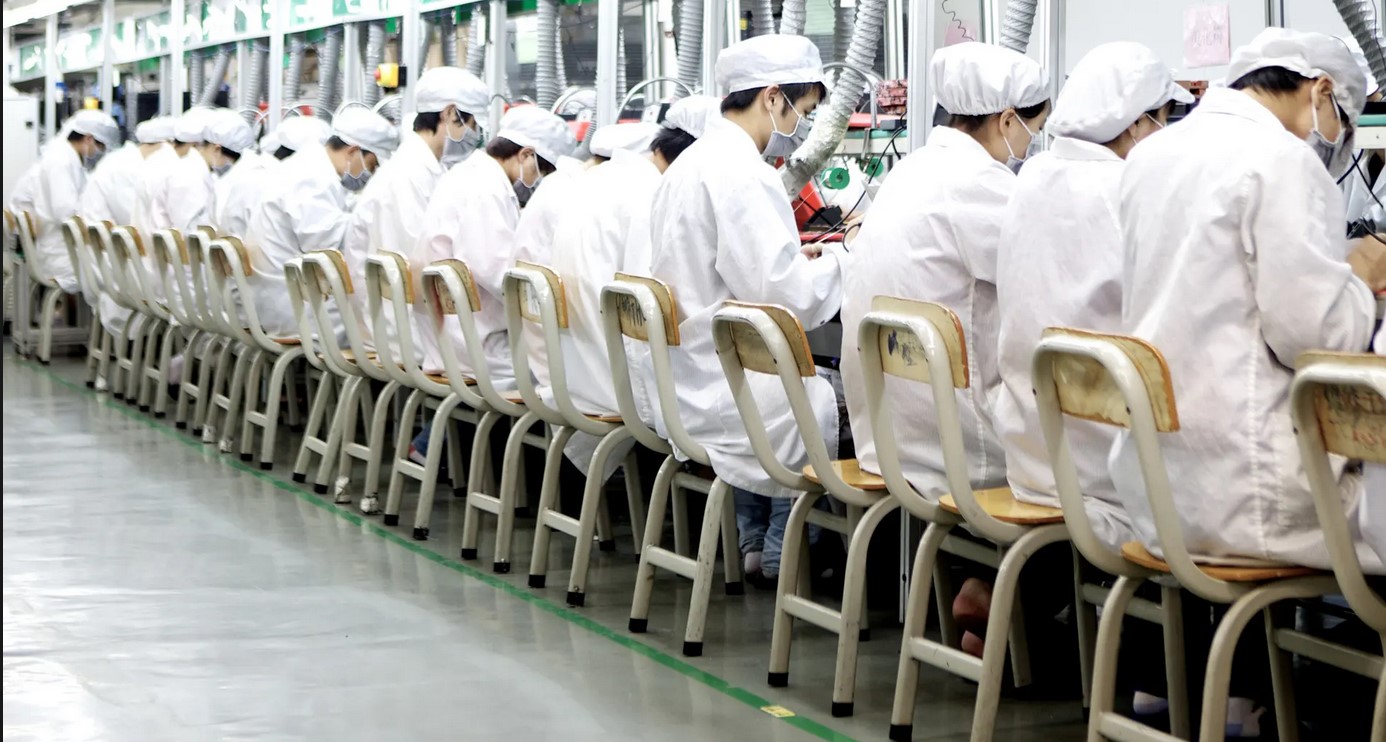Now that social distancing is a thing, I would like to provide you with a tool you can use to help maintain social distancing. It might require a re-design of your current assembly lines, but it will be worth it. It is In-Process Kanban or IPK.
Many of the pictures I have seen of assembly lines have people crammed next to each other. I understand why, companies want to save space, ergonomic issues, efficiency, and many other reasons. In a Lean, culture-changing environment, employee considerations need to be top of mind. They are not practicing social distancing below. In-Process Kanban would help.

NOT SOCIAL DISTANCING

By deploying IPK’s you can increase the distance between operators. As you can see in the example above, we have a fully staffed line. When each operator completes the work, they will put it in the X or IPK on the assembly line. The person next to them will pull the unit into their workstation, complete their work and if the IPK is empty, they will put it in their IPK.

Operation 20 would pull the unit from operation 10 into their workstation, complete their work and put the unit in the IPK. If operation 30 hasn’t taken the unit from the IPK when they complete with the next unit, they would not build any more units. Normally, they would move to operation 30 to aid and assist but that isn’t the best idea to keep social distancing.
The rule for using IPK’s is you can have one unit in your workstation and one unit in your IPK then you stop or flex to an open operation. What’s flexing? It means that you move to where work can be done. In a line that uses IPK’s your operators will flex across a minimum of three operations. Their primary operation, one upstream and one downstream.
Upstream is away from the customer and downstream in toward the customer. In this example operation 30 is toward the customer and operation 10 is away from the customer. An important aspect of IPKs is that they allow you to operate the line even if employees don’t make it to work. You can run the line with a “hole” in it. Here is what it looks like.
Remembering the rule of having one unit in your workstation and one unit in your IPK and then you flex, what would the operator at operation 10 do? The operator would flex into operation 20, pull in the unit, complete the work and then put it in the downstream IPK. Since there isn’t a unit in the operation 10 IPK, they would flex back to operation 10, put the completed unit in the IPK then start another unit.

The two operators would flex back and forth across the three operations to keep the product moving. The three benefits of flexing are:
- Work is less monotonous
- Flexing happens automatically, no supervision required
- Operators know three operations which makes them more flexible
If your assembly lines are high volume and you measure against Takt times, operating a line with a “hole” in it means that Takt times will go by and you won’t get a product off the assembly line. Many companies use this as their way of handling reduced demand for their product. It’s easiest to use your smartest and most flexible asset- your employees than to re-balance the line.
If you would like virtual help in this topic or reviewing your line to see where In-Process Kanban can be used, please contact me at tom@americanlean.com. I will be glad to help.
As always, it is an honor to serve you and I hope that you and your company are getting better every day!
Follow me on Twitter
Join me on LinkedIn
Listen to the podcast here

